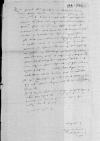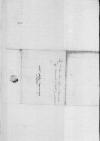List #2759
Sigmund von HERBERSTEIN do Ioannes DANTISCUSVienna, 1544-10-01
| odebrano Wormditt (Orneta), 1544-10-21 Rękopiśmienne podstawy źródłowe:
Pomocnicze podstawy źródłowe:
Publikacje:
| ||||||||||||||
Tekst + aparat krytyczny + komentarz Zwykły tekst Tekst + komentarz Tekst + aparat krytyczny
Reverendissimo domino, domino
Reverendissime Praesul, Domine observandissime et colendissime. Servitiorum meorum perpetuam commendationem.
Non potui me continere, quin ad Vestram Reverendissimam Dominationem de his, quae apud nos feruntur, paucis perscriberem. {Caesaream maiestatem} scribit
Ex
Vestrae Reverendissimae Dominationis obsequentissimus


 UUB, H. 154, f. 80v
UUB, H. 154, f. 80v